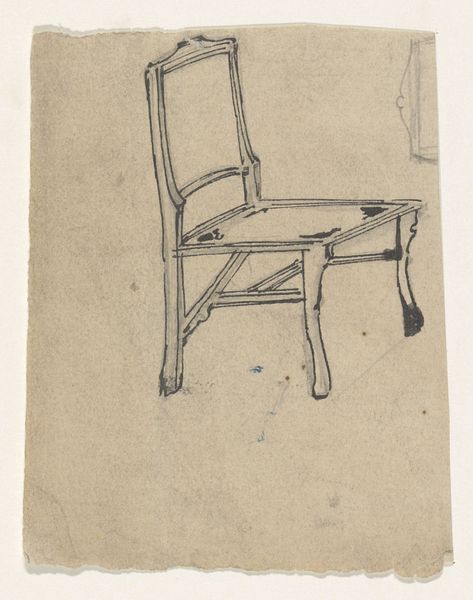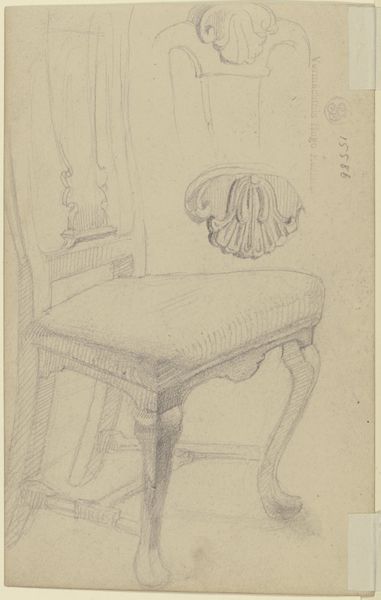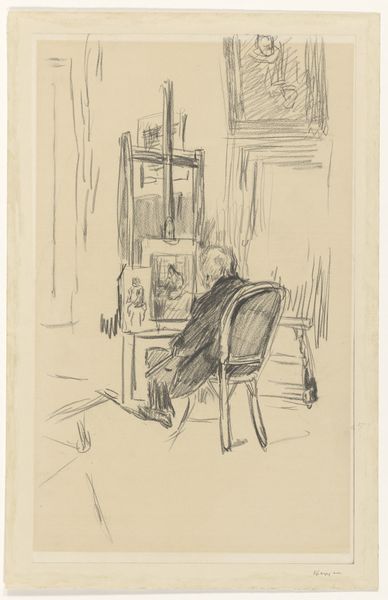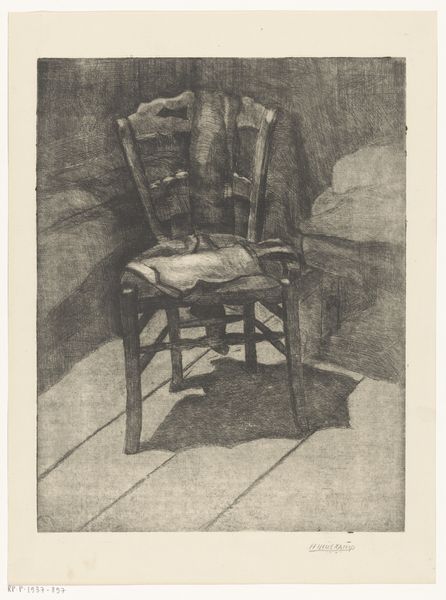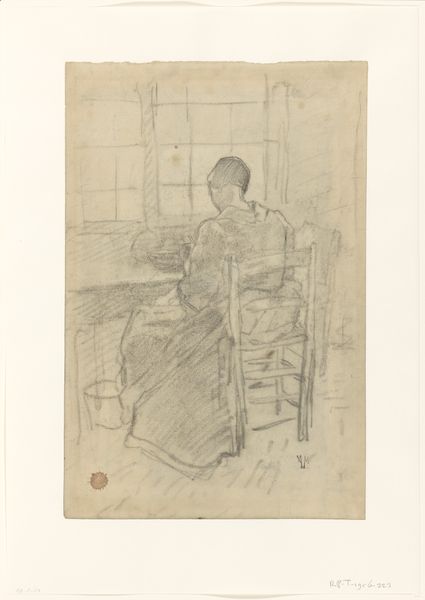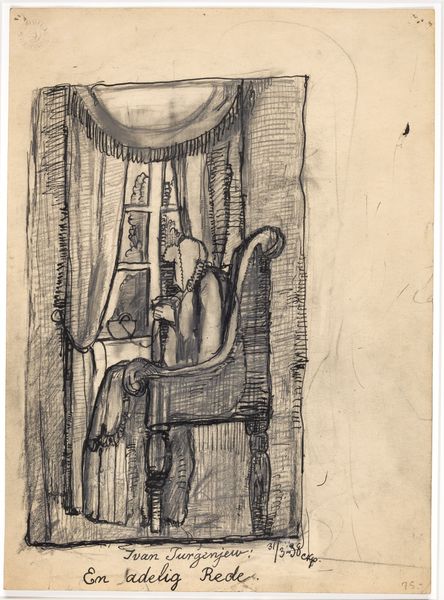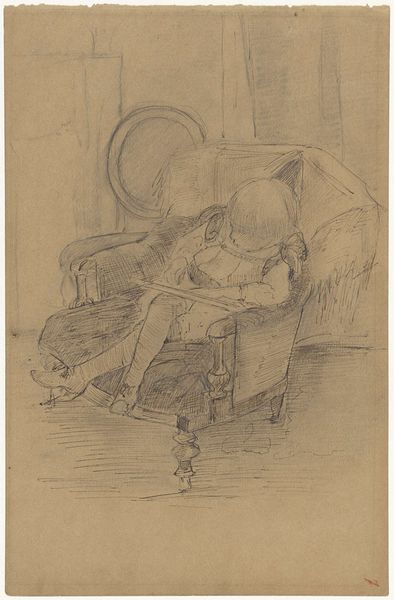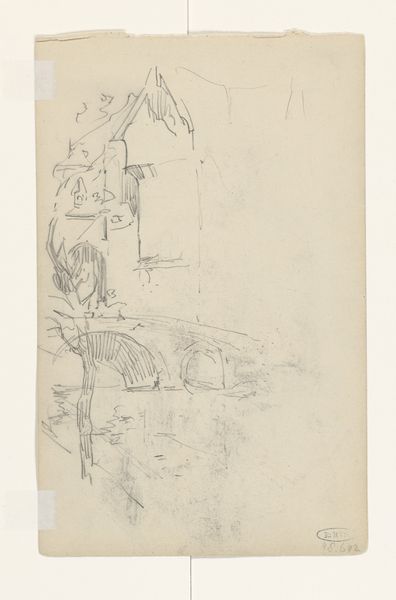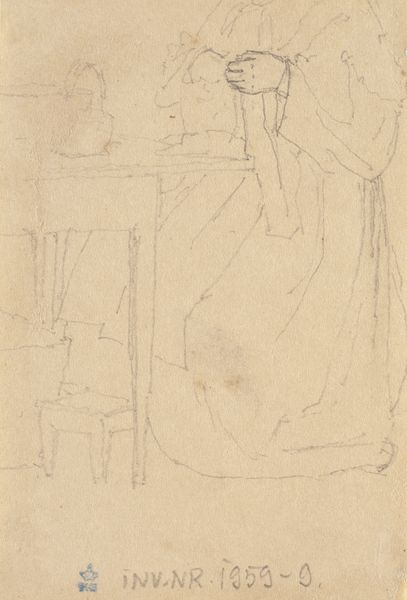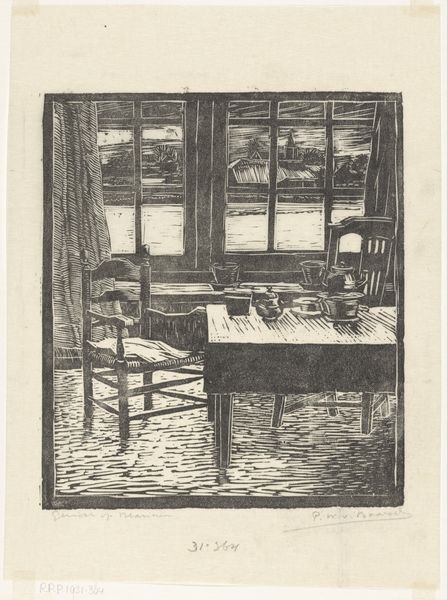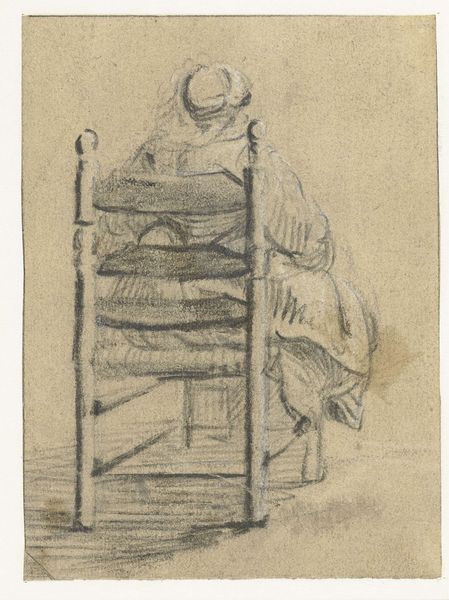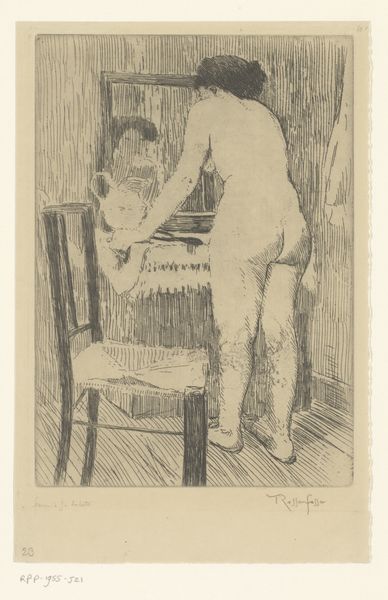
print, etching
#
dutch-golden-age
# print
#
etching
#
landscape
#
etching
#
modernism
Dimensions: height 198 mm, width 139 mm
Copyright: Rijks Museum: Open Domain
Curator: Jan Mankes created this work, titled "Stoel met biezen zitting," in 1914. The medium used here is etching, a form of printmaking. Editor: It feels incredibly intimate, almost like stumbling upon a quiet moment. The chair’s right there, boldly centered, but there's also a whole little story being told around it: the still life on the chest, the view from the window. A longing for the countryside perhaps. Curator: Mankes was indeed interested in simple, often overlooked subjects, elevating them through careful observation and technical skill. The emphasis on the everyday—the chair, the bottle, the landscape visible through the window—speaks to the modern sensibility and a turning away from academic, grand narratives. How might we connect this to broader social changes of the time? Consider the rise of socialist thought, with the dignity of labor and of rural life emerging as political and aesthetic concerns. Editor: Oh, absolutely! It is so evocative of a very personal interior. Looking at the woven seat of the chair and how lovingly it’s rendered, it's difficult to separate that sense of quiet domesticity from some very charged politics surrounding the home and labor. Makes me think about who sat in this chair, what their daily lives looked like, or felt like. All the minute marks and their very fine execution are so very impressive too. Curator: Right, and the limited palette further directs our gaze, drawing us into its hushed, almost monochrome world. There is no vivid color, only tones and careful linework, giving it an enduring, contemplative quality. How might that emphasis on subtle shading inform or shape our emotional experience of the work? Editor: It's a drawing but so so tonal. All that texture gives it such a calm mood to the piece. Even though I have seen many beautiful chairs, there is something humble and profound at the same time, you know? Perhaps because everything else seems to suggest a life contained, maybe even a little stifled, within this indoor setting. What do you make of that stark division of foreground and background? Curator: The placement and arrangement within the frame indeed adds layers of interpretation. By positioning the chair so prominently, and the window as a framed background, Mankes engages in dialogues with representation and with notions of containment and escape that speak across generations and identity positions. Editor: Agreed! So, what I get from it ultimately is a very specific portrait of a place, maybe a mood… the solitude you feel within one's personal spaces, all lovingly etched with a very special personal perspective. Curator: I concur, it is the confluence of simple composition and social historical meanings that resonates the most.
Comments
No comments
Be the first to comment and join the conversation on the ultimate creative platform.


